After spending months creating and implementing an SEO strategy to try and make an online business visible in the search results, the next most common problem entrepreneurs face is translating that traffic into something meaningful. Once businesses start getting visitors, they want to look at converting them into sales and profit. This is where conversion optimization comes in to maximize that return on traffic. Conversion optimization is a tricky business as a simple change can literally make or break a websites balance sheet. Making poorly thought out changes can result in higher bounce rates, lower page views and reduced visitor sessions which can ultimately tank a website’s ranking and undo any
These 6 simple and proven conversion optimization quick wins below can help you improve your returns.
Website Performance
How fast a website loads up has been identified as an
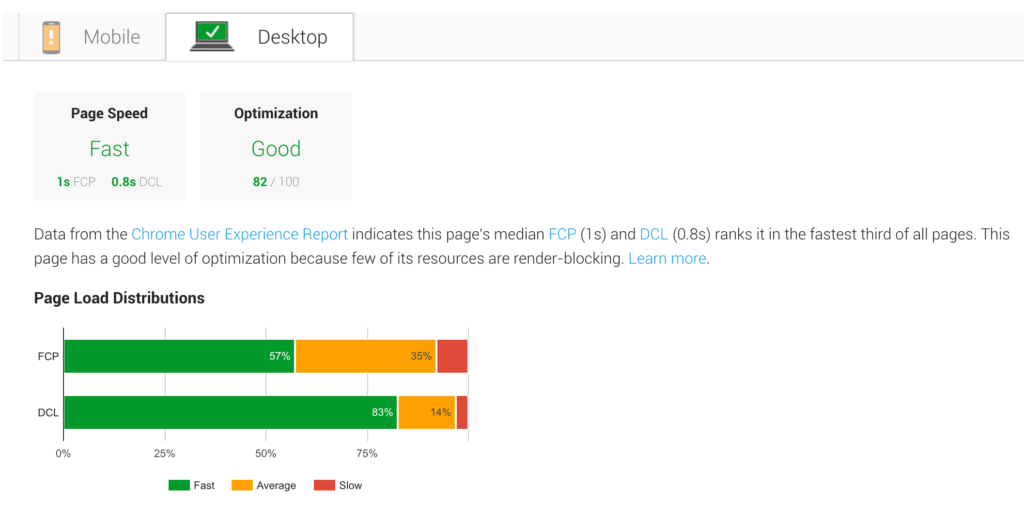
Push Notifications
You would be surprised exactly how many websites are still not using push notifications. So, what are these? Educational startup Learndojo uses them effectively with a picture of a cute panda (see below).
As soon as you land on the website, a drop-down box appears at the top asking if you would like to receive push notifications. There’s a cute little waving panda too which makes it seem friendly and you can’t help but accept. Once a user clicks “allow notifications”, they can then be sent a browser notification for every single post published from this point. This is a really effective way to keep bringing back visitors for increased sales – think coupon codes, lightning deals or announcements. This works well to drive customers to new posts and encouraging drive an instant spike of returning visitors. These notifications even work well on mobile devices.
So how do you set these up? Head over to Onesignal.com and sign up to create one for your website. The best part? It’s all completely free to do and the instructions require zero coding experience.
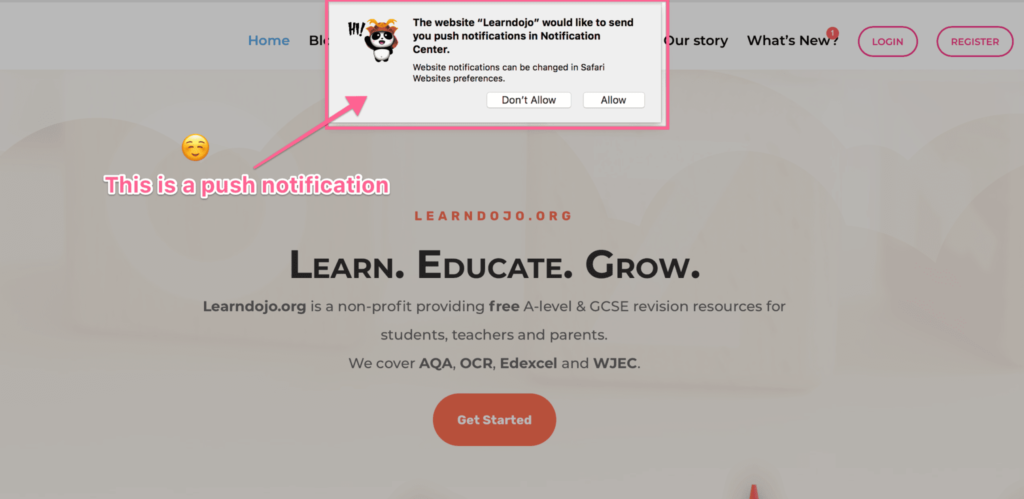
Email Marketing
Every website you probably visit has pop-ups asking for your email address and this is because they convert so well for the price. Email marketing is a fantastic way to keep your visitors engaged with what’s happening with your site or business. There are a number of ways to set up email marketing but I’ll give you by far the simplest and cheapest to get you up and running. Head over to Mailchimp and sign up for a free account.
You can have up to 2k subscribers and send 12k emails per month for free which is more than enough to get you up and running with your email newsletters. As your subscriber list grows, you can look at alternative email marketing providers quite easily by simply exporting your subscribers over. Once you get a substantial following, simply work on your content and copy in the emails and see what works well with split A/B testing different ones.
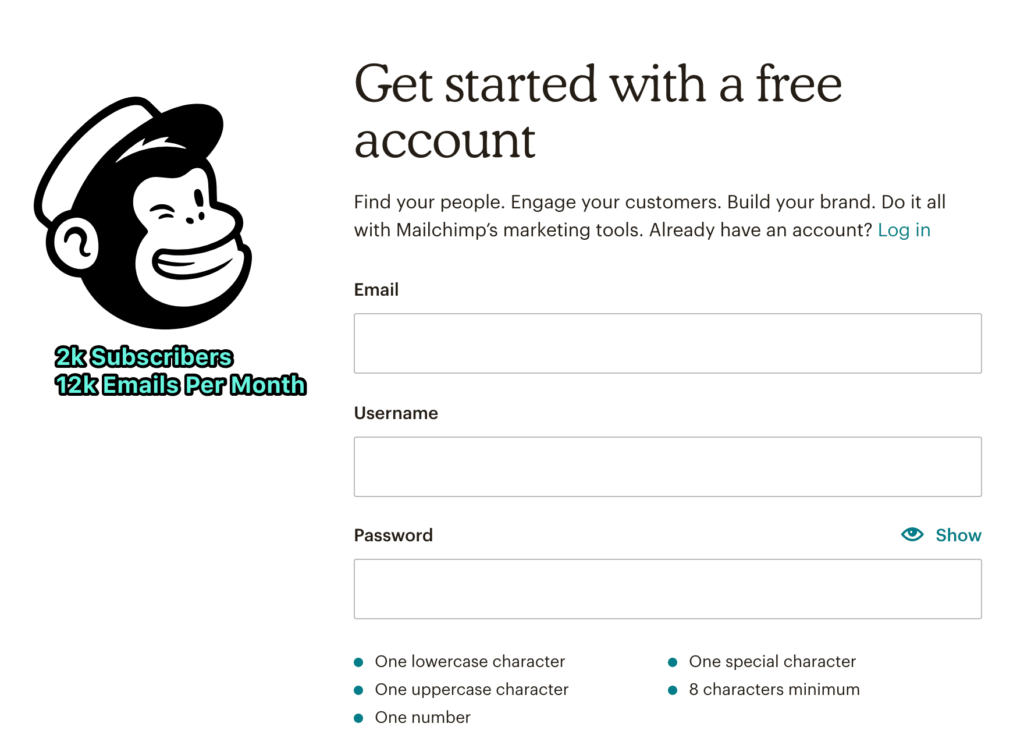
Setup a Facebook Pixel
You may be wondering what a pixel is or how it works having heard about it, so here’s a really simple explanation. It’s a piece of code you input on your website that tracks your visitors which you can then analyse and re-target on Facebook with adverts or campaigns. The thinking here is if you have user’s that are quite well engaged with your website already and naturally finding It via search, you can segment them and re-target them for better conversions on Facebook. It works exceptionally well if done right giving a huge return on investment with the right ad campaigns on Facebook.
Facebook has over 2 billion active users which means its captured about a third of the population on the globe. This is pretty huge considering there are many developing countries yet to see its benefits, so the people who are on it, are the people businesses will want anyways (potential paying customers). To set up a Facebook pixel, simply follow this guide. The picture above is a small example of just some of the stats you can pull.
![]()
Frictionless Checkout
The longer a checkout process is, the more time users have for doubt to creep into their minds about their purchase and disband the whole checkout process. Amazon knew this, in fact they knew it so well, that in 1999 they even patented the 1-click checkout process. Other companies have had to wait until the patent expired because impulse buys have a massive impact on sales. An overview from the Amazon dashboard that demonstrates how it works is below.
Like Amazon, ideally, you’re looking to create a simple, streamlined checkout process where they don’t need to enter their details every time they visit you. Also, you don’t want anything more than you need for new customers (think GDPR for European customers but also simplifying the checkout process for better sales). Notice also, how difficult it is to go back from this page too. The only clickable link leading you back out is the Amazon logo itself. There’s no buttons to go back or anywhere else which all influence people to progress forward and purchase which means increased conversions.
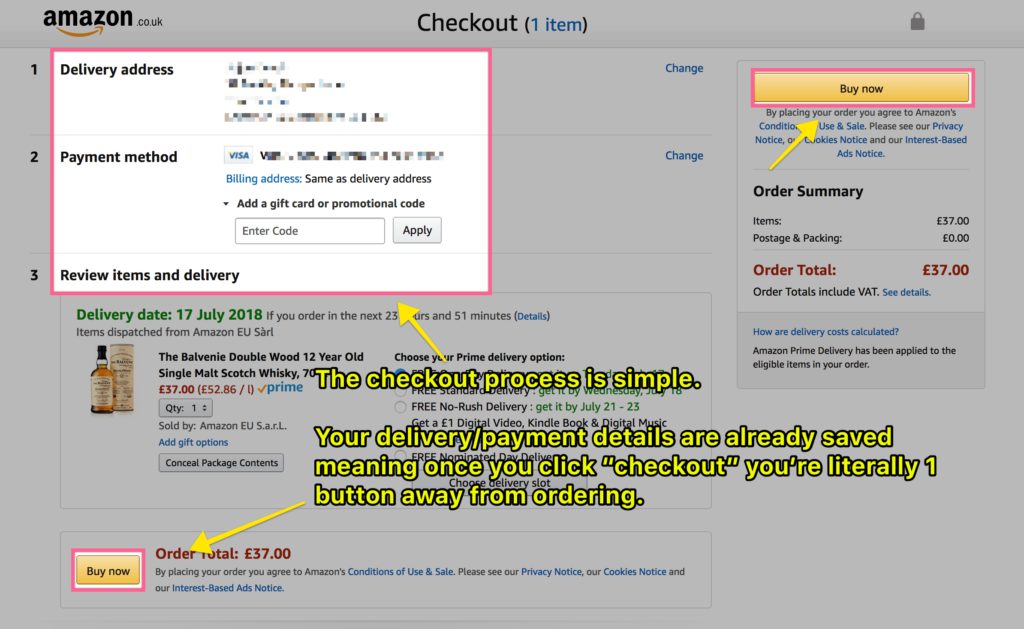
Freebies*
Everyone loves free stuff. One effective way to start collecting email addresses (which you can then try and convert using the tactics outlined previously) is to give something of value away for free. This doesn’t necessarily have to be something that costs you huge amounts of money either*, it could literally just be an informational product you’ve spent a few hours creating. Brian Dean from Backlinko demonstrates a great example of this.
As soon as you land on Backlinko, a popular marketing blog, the first thing you see is a luring invite to enter your email address. It’s a full- page CTA (call-to-action) thats screaming at you to take a second to fill this in and get something fantastic back. In return, users are offered some exclusive free tips on increasing traffic. We don’t necessarily know what these are but the copy is luring and will convert well. You can quite easily create something similar if you wished. Once users have signed up, you can target them with email newsletters or even export their email addresses onto Facebook’s advertising platform to run custom audience campaigns. Custom audience campaigns allow you to run a adverts that targets only the email addresses you’ve exported. As they are people already interested and engaged with your website (and thus you have some form of relationship) the science and psychology behind this suggests they have a higher chance of converting.
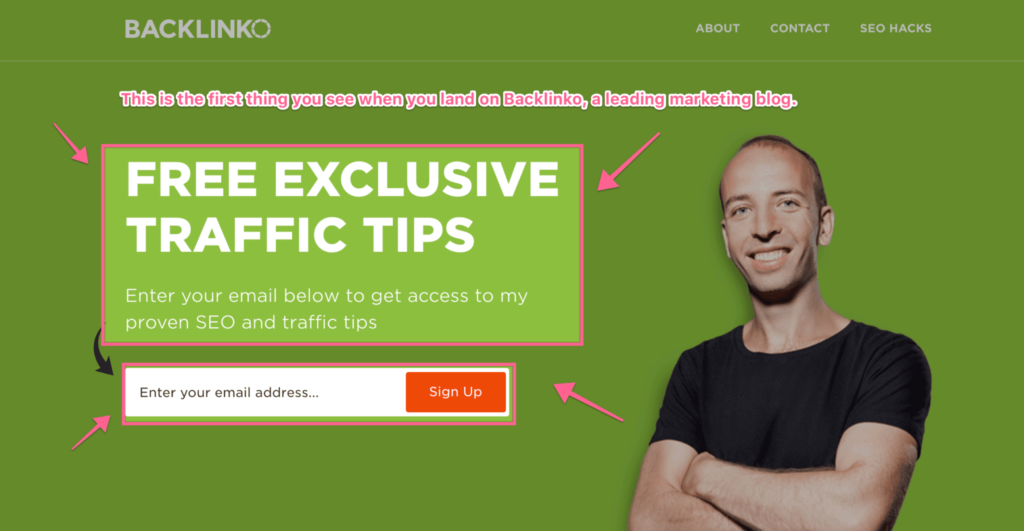
So what are your thoughts? What top tips have you used or would recommend for other TYB readers? Leave a comment below and let me know.


